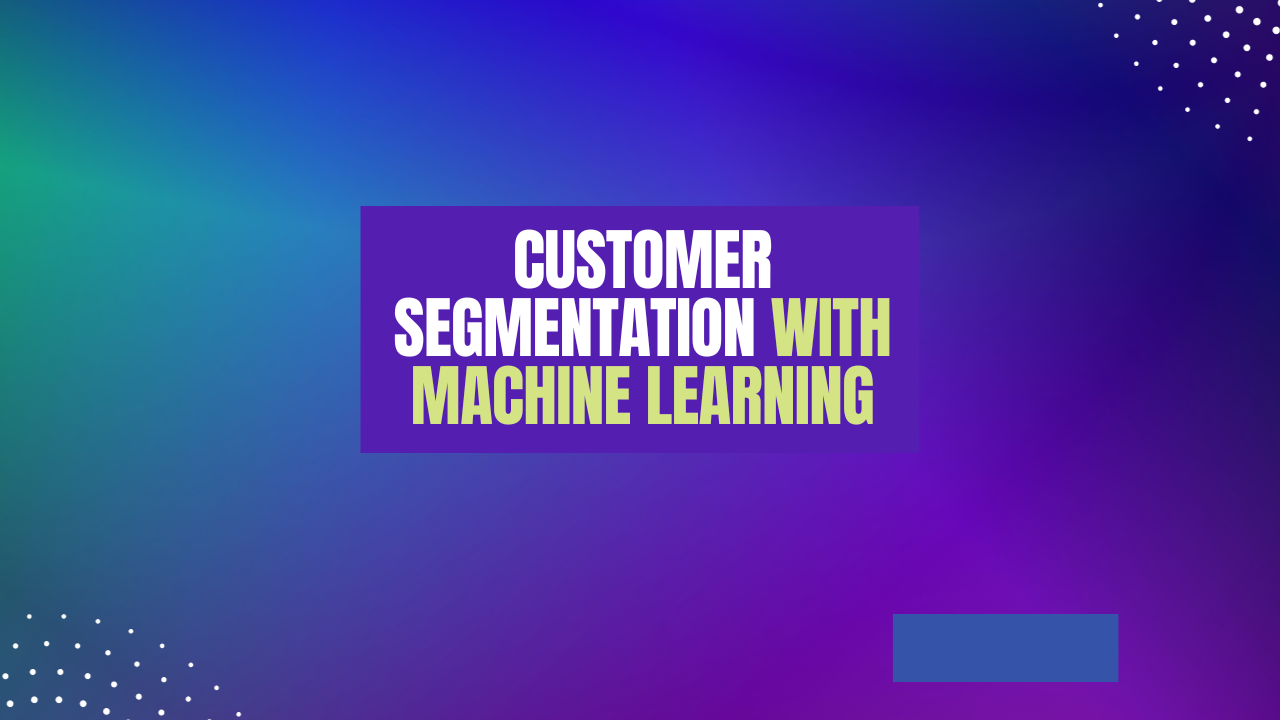Customer Segmentation with Machine Learning
Customer Segmentation with Machine Learning
Customer Segmentation with Machine Learning
Table of Contents
- Customer Segmentation with Machine Learning
- Customer Segmentation with Machine Learning
- K-means algorithm in ML
- 1. Data Collection:
- 2. Data Preprocessing:
- 3. Feature Selection:
- 4. Choosing the Number of Clusters (K):
- 5. Applying the K-means Algorithm:
- 6. Interpreting the Clusters:
- 7. Validation and Refinement:
- 8. Application of Insights:
- 9. Iterative Process:
- Benefits of Customer Segmentation using K-means:
- Read More
Customer Segmentation with Machine Learning
K-means algorithm in ML
Imagine that you are treating the grocery shop owner that you shop every day, as you treat your significant other. That can be fun at the beginning, however may cause disastrous situations too. Likewise, it can be unfavourable for a company to manage its relationships with every customer similarly.
The beauty of random forests lies in teamwork. Instead of relying on just one decision tree, they gather insights from many. Picture it like putting together a diverse group of experts, each contributing their unique perspective. By considering all these viewpoints, random forests produce highly accurate and dependable predictions, especially when dealing with complex data.
Real "AI Buzz" | AI Updates | Blogs | Education
1. Data Collection:
Start by collecting data from your e-commerce platform. This data could include customer demographics (age, gender, location), purchase history (products bought, purchase frequency, purchase amount), website interactions (pages visited, time spent on site), and any other relevant information.
2. Data Preprocessing:
Clean the data to handle missing values, outliers, and inconsistencies. Convert categorical variables into numerical ones if needed. Standardize or normalize numerical features to ensure they are on a similar scale, which is crucial for the K-means algorithm.
3. Feature Selection:
Determine which features are most relevant for customer segmentation. For e-commerce data, this could include purchase frequency, total spending, types of products purchased, and website engagement metrics.
4. Choosing the Number of Clusters (K):
One of the critical steps in K-means clustering is choosing the right number of clusters. Techniques like the elbow method or silhouette score can help determine the optimal value of K, representing the number of customer segments.
5. Applying the K-means Algorithm:
Use the preprocessed and feature-selected data to apply the K-means algorithm. The algorithm groups customers into K clusters based on their similarities in the selected features. Each cluster will represent a distinct customer segment.
6. Interpreting the Clusters:
Analyze the clusters to understand the characteristics of each segment. For instance, one cluster might include high-spending, frequent buyers, while another might consist of infrequent, budget-conscious shoppers. Understanding these segments is essential for targeted marketing strategies.
7. Validation and Refinement:
Evaluate the quality of the segmentation. Metrics like the inertia value (sum of squared distances from data points to their respective cluster centers) can help assess how well the data points fit within their clusters. If the segmentation isn’t satisfactory, you might need to refine the features or reevaluate the number of clusters.
8. Application of Insights:
Once the segmentation is validated, you can apply these insights to your e-commerce business. Tailor marketing campaigns for each segment. For example, offer loyalty rewards to high-spending customers, and provide discounts to price-sensitive segments. Customize the website experience based on user preferences to enhance user engagement and satisfaction.
9. Iterative Process:
Customer behaviors change over time, so customer segmentation is not a one-time task. Regularly update your data and re-run the segmentation process to adapt to evolving customer preferences and market trends.
Benefits of Customer Segmentation using K-means:
- Personalized Marketing: Targeted marketing campaigns increase customer engagement and conversions.
- Inventory Management: Stock levels and product offerings can be optimized based on segment preferences.
- Customer Retention: Tailored services and offers enhance customer loyalty and retention.
- Improved User Experience: Website layout, product recommendations, and content can be personalized for different segments, improving user satisfaction.
By applying the K-means algorithm to real-world e-commerce sales data, businesses can gain valuable insights into their customer base, leading to more effective marketing strategies, improved customer satisfaction, and increased revenue.
Read More









Leave a Reply